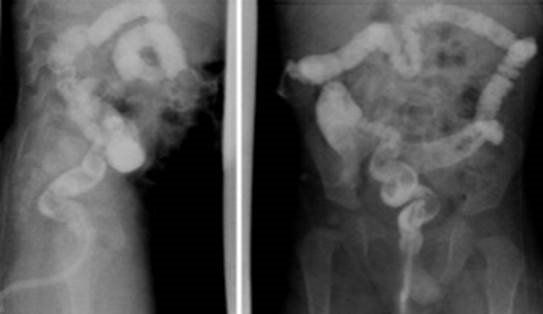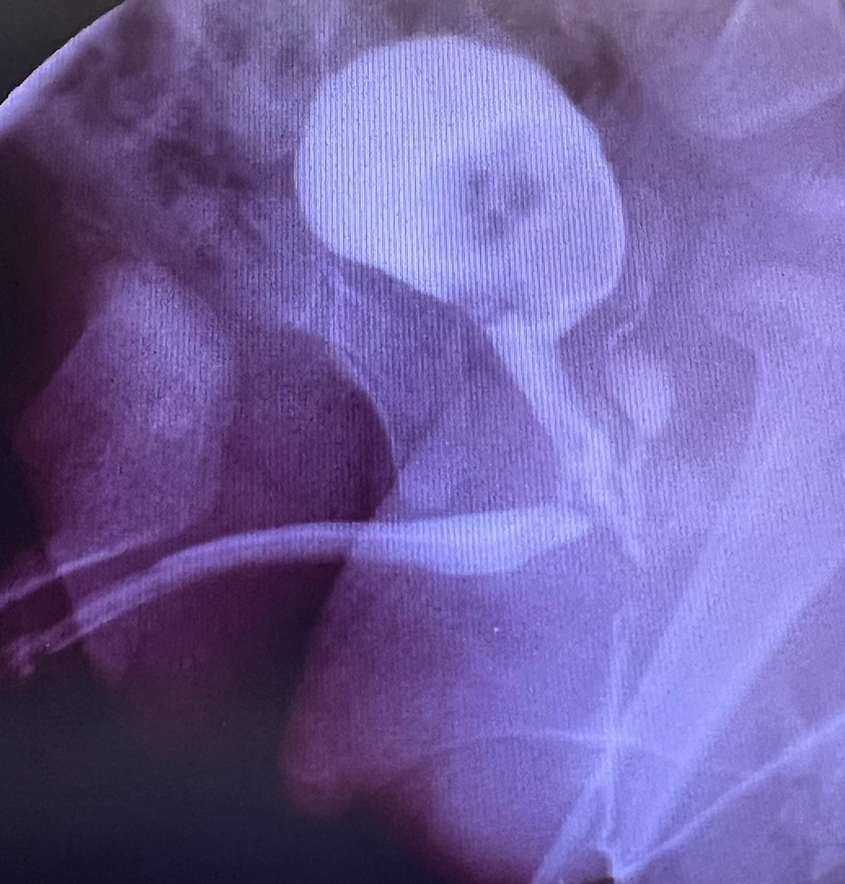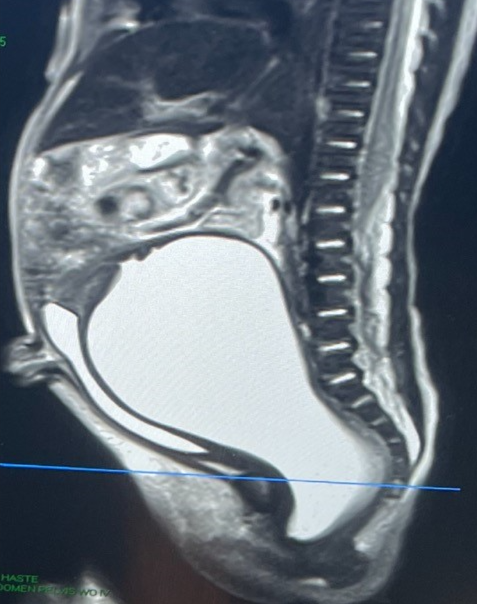Colorectal Quiz: December 19, 2022
Happy Monday! We will take a bit of a break from these quizzes, after this one today, until after the new year. I want to take this opportunity to wish everyone a happy holiday season and new year!
Starting soon these quizzes will go directly to the StayCurrent app, and will be more interactive – I think you are going to really like the new format.
Last week I asked you about a one-year-old boy who was treated for neonatal obstruction with an ileostomy. At that time, a biopsy of the sigmoid showed ganglion cells, but a rectal biopsy showed no ganglion cells but also no hypertrophic nerves. Below is the contrast study.

So many of you asked for a repeat rectal biopsy which I was happy to hear – because we all should know that no HD operation should be done with only the absence of ganglion cells.
To my frustration that repeat biopsy showed the same thing, no ganglion cells but also no hypertrophic nerves, which was quite confounding. Calretinin staining was negative which helped me confirm my suspicion that we were dealing with Hirschsprung’s and we planned a pulled through. In the operating room, the mid-sigmoid colon showed no ganglion cells and hypertrophic nerves. The proximal sigmoid/distal left colon showed good ganglion cells and normal nerves. We did the pull-through to that level and also closed the ileostomy.
For this week, another Hirschsprung’s challenge:
A patient with total colonic HD has been living their life with an ileostomy, but they are short gut – requiring 12 hours of TPN plus enteral feeds via a G tube. They are being evaluated for a possible small bowel transplant. Is there anything to be done for this patient to improve their nutrition?




